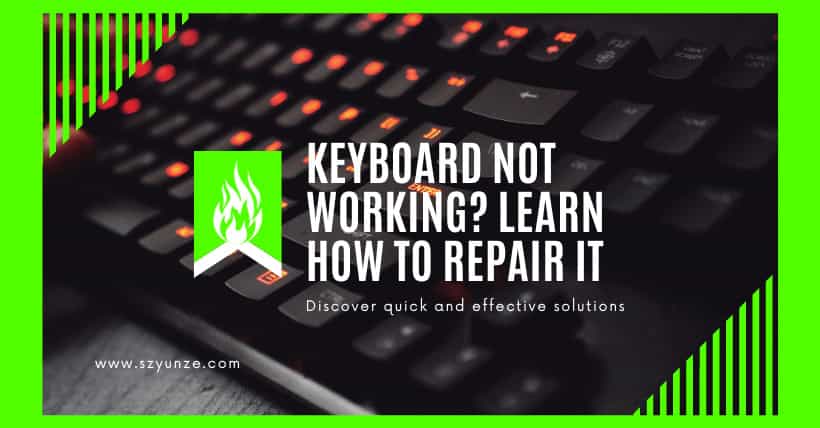The computer keyboard is an important tool for our daily computer use. If it suddenly malfunctions, it can cause us significant trouble in our work and studies.
There are many reasons for computer keyboard malfunctions, such as hardware failures, software issues, driver problems, virus infections, and more.
So, what should you do if your computer keyboard stops working? Are there any simple and effective solutions?
01
The Number Pad or some Letter Keys are Typing Numbers
This is generally due to the Num Lock or Caps Lock functions being enabled, causing a change in the functionality of certain keys.
Solution:
If Num Lock is enabled, you can press the ‘Num Lock’ key to toggle it on or off. There should be a numeric keypad light above the ‘Num Lock’ key. If the light is on, the number pad is active; if it’s off, it’s disabled. If Caps Lock is enabled, you can press the ‘Caps Lock’ key to toggle it on or off. There should be a Caps Lock indicator light above the ‘Caps Lock’ key. If the light is on, Caps Lock is active; if it’s off, it’s disabled.
02
Some Keys Not Working or Keys Malfunction without any Specific Pattern
Solution:
- Disassemble the keyboard and gently clean the circuit board and conductive rubber with cotton swabs soaked in alcohol with a concentration of at least 97%. Reassemble the keyboard after the alcohol has completely evaporated.
- Check for any loose or detached solder joints in the soldering module. If you are proficient with a soldering iron, you can perform re-soldering as needed.
- Inspect the keys for any sticking or damage. If any keys are problematic, carefully remove them with a small knife or pliers and replace them with keys of the same type.
- If none of the above methods resolve the issue, it may indicate severe hardware damage, and you may need to replace the keyboard with a new one.
03
The keyboard not Functioning at all or not detected in Device Manager
Solution:
- Check the keyboard connection: Ensure that the keyboard is properly connected to the computer’s USB or PS/2 port. Try using a different USB port or cable to rule out connection issues.
- Restart the computer: Sometimes, a simple reboot can resolve issues with keyboard detection. Restart your computer and see if the keyboard starts working.
- Test on another computer: Connect the keyboard to another computer to see if it functions there. If it works on another computer, the issue may be with your computer’s hardware or drivers.
- Check for driver issues: In Device Manager, look for the keyboard under “Keyboards.” If it’s not listed or has a yellow triangle icon indicating a problem, there may be driver issues. Try updating or reinstalling the keyboard drivers.
- Try a different keyboard: If you have access to another keyboard, connect it to your computer to see if it works. This can help determine if the problem lies with the keyboard itself.
- Check for hardware problems: If none of the above steps work, there may be a hardware problem with your computer’s motherboard or USB/PS/2 port. Consider seeking professional help or contacting the manufacturer for assistance.
Related:

Disclaimer:
- This channel does not make any representations or warranties regarding the availability, accuracy, timeliness, effectiveness, or completeness of any information posted. It hereby disclaims any liability or consequences arising from the use of the information.
- This channel is non-commercial and non-profit. The re-posted content does not signify endorsement of its views or responsibility for its authenticity. It does not intend to constitute any other guidance. This channel is not liable for any inaccuracies or errors in the re-posted or published information, directly or indirectly.
- Some data, materials, text, images, etc., used in this channel are sourced from the internet, and all reposts are duly credited to their sources. If you discover any work that infringes on your intellectual property rights or personal legal interests, please contact us, and we will promptly modify or remove it.



